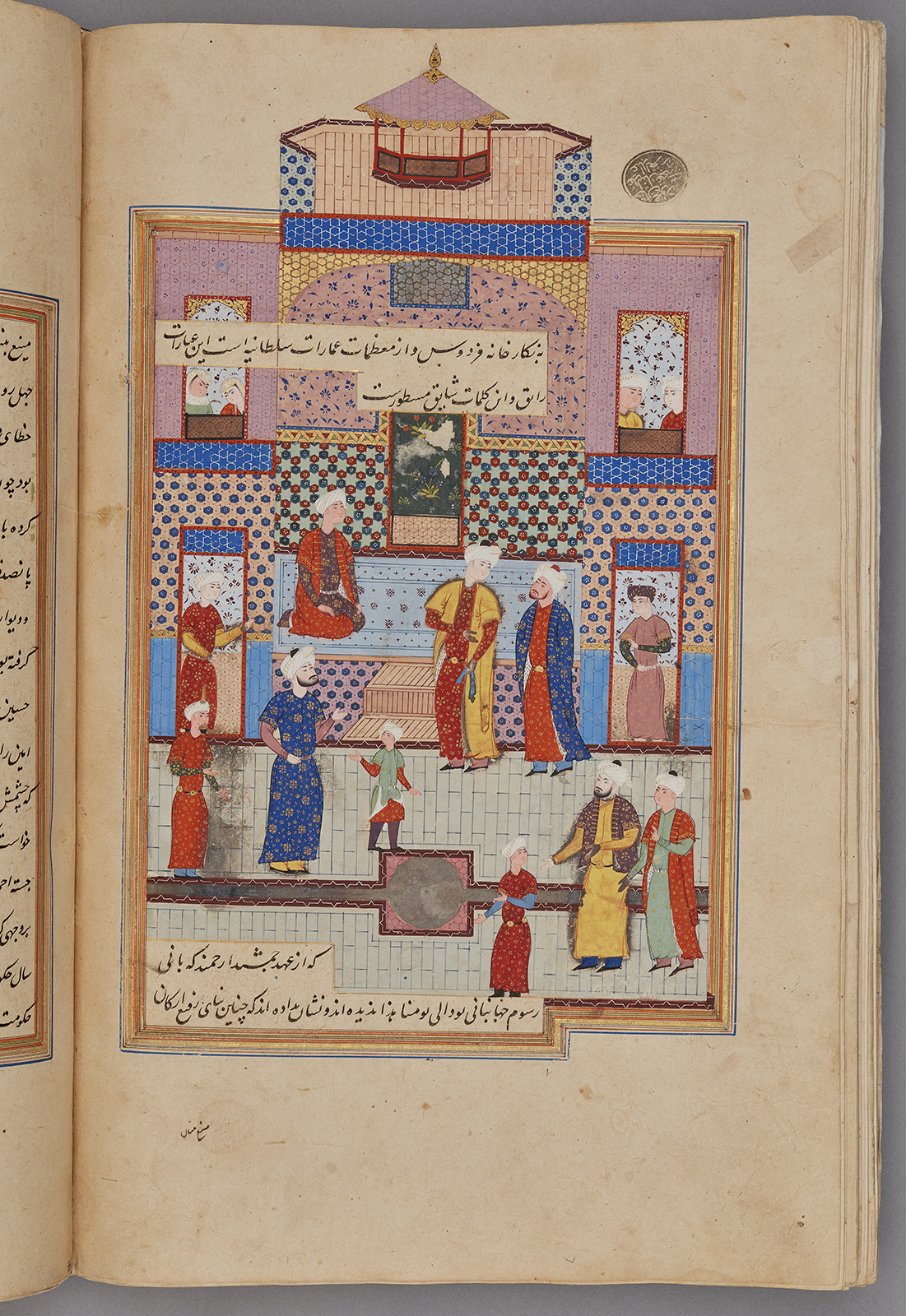Click on the image to zoom
The Pavilion and the court of Uljaitus Palace, Folio from a manuscript of Nigaristan
- Accession Number:AKM272.f84v
- Creator:Author: Ahmad b. Muhammad Ghaffari, Persian, died 1567 Scribe: Ahmad al-Shirazi
- Place:Iran, Shiraz (probably)
- Dimensions:38.7 cm × 25 cm × 6.4 cm
- Date:1573-74 CE/980 AH/AH 980
- Materials and Technique:Ink, opaque watercolour, and gold on paper
The miniature painting "The Pavilion and the court of Uljaitus Palace" is from an intact manuscript of Kitab-i Nigaristan, a collection of anecdotes and historical incidents written in prose by the historian and scholar Ahmad Muhammad Ghaffari (1504–1567/68) of Kashan in 1551–2. This illustrated manuscript, dated 1573, was probably produced in a Shiraz workshop.
See AKM272 for more information about the manuscript and links to the other illustrations.
Further Reading
The miniature painting is an example of illustrating an architectural structure, where one sees the façade as well as the space inside. The polygonal pavilion over the dome of the building is a special feature in this painting.
The architecture represents a unique building commissioned by Ilkhan Uljaitu, the ruler of the Ilkhanid dynasty. He engaged master builders and craftsmen to complete a massive residence in Sultaniyya within a very short time. The text to this illustration compares the work of the builders and craftsmen with the demons that once served the mythical Iranian ruler Jamshid.
Similar to other Illustrations in this manuscript, this miniature painting depicts both the interior and the façade of a room. The composition of the indoor illustrations of the Nigaristan follows the same formula, and generally shows the same spatial division.
Here, the main room is the space under the dome. Unusually for the Nigaristan, the two text boxes do not cover the whole width of the illustration. Most likely, the painter conceived the image after the line-maker had already set the frames for this folio. The left and right segments beside the dome are the façades of the building.
Occasionally, some elements of the miniature paintings in the Nigaristan penetrate the frame and stand out from the margins. This technique underlines the meaning of such elements. In this illustration, the dome pierces the frame, emphasizing the incredible scale of the building.
- Elika Palenzona-Djalili
References
Uluç, Lale. Turkman governors, Shiraz artisans and Ottoman collectors. Sixteenth century Shiraz manuscripts, Istanbul: Türkiye İş Bankası Kültür Yayınları, 2006. ISBN: 9789754589634
Sims, Eleanor. Peerless Images: Persian Painting and Its Sources. New Haven and London: Yale University Press, 2002. ISBN: 9780300090383
Note: This online resource is reviewed and updated on an ongoing basis. We are committed to improving this information and will revise and update knowledge about this object as it becomes available.


